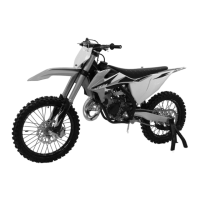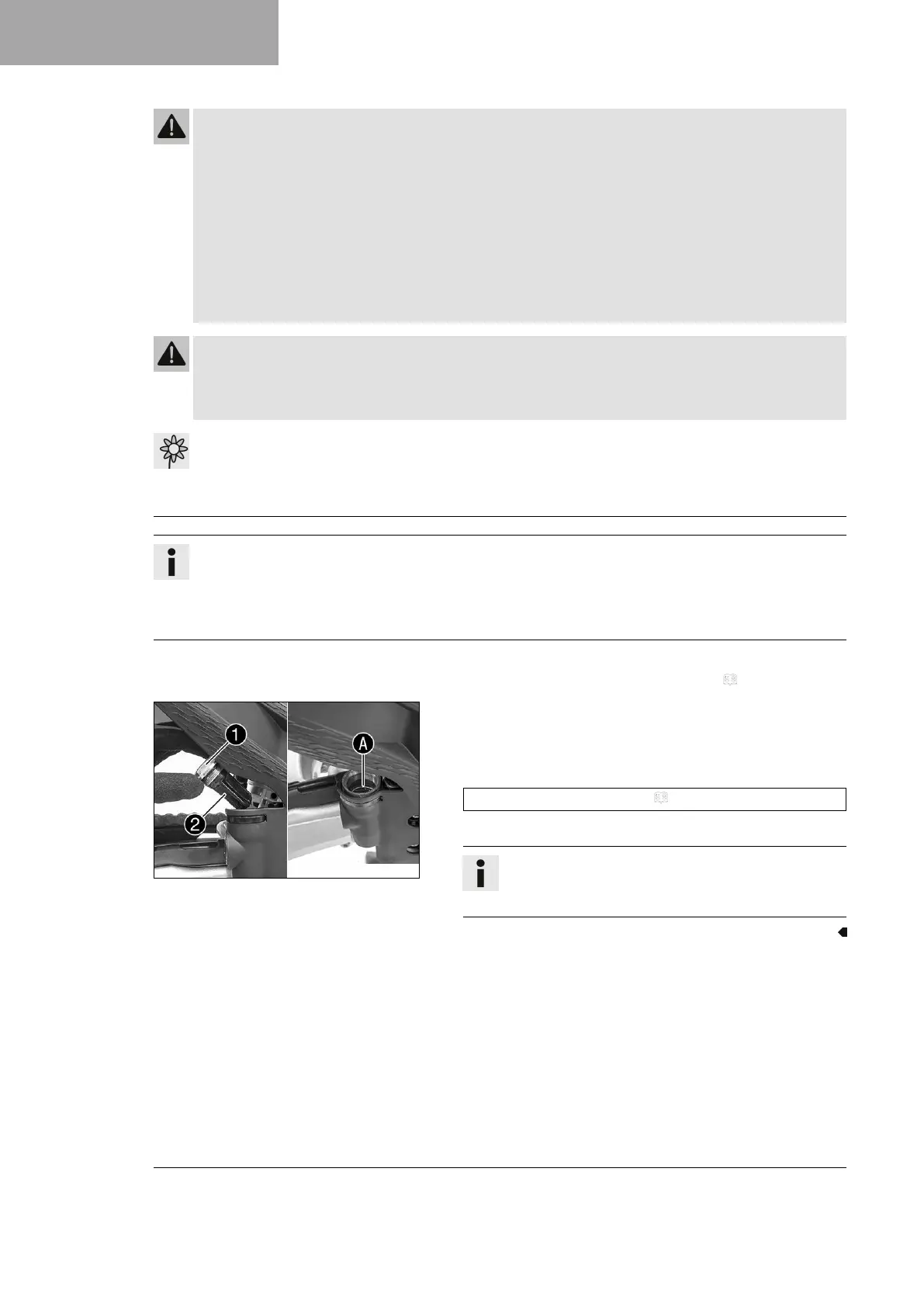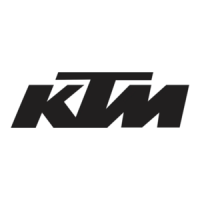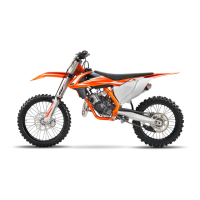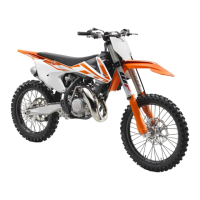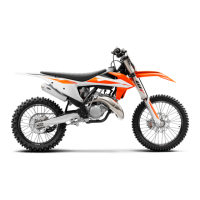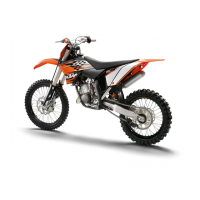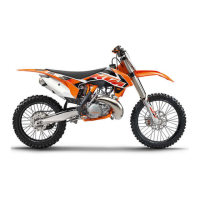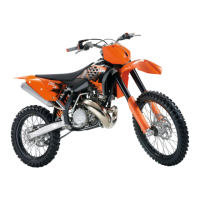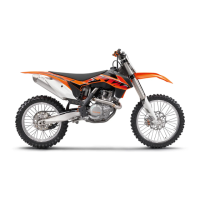12 BRAKE SYSTEM
88
Warning
Skin irritation Brake fluid causes skin irritation.
– Keep brake fluid out of the reach of children.
– Wear suitable protective clothing and safety glasses.
– Do not allow brake fluid to come into contact with the skin, the eyes or clothing.
– Consult a doctor immediately if brake fluid has been swallowed.
– Rinse the affected area with plenty of water in the event of contact with the skin.
– Rinse eyes thoroughly with water immediately and consult a doctor if brake fluid comes into contact
with the eyes.
– If brake fluid spills on to your clothing, change the clothing.
Warning
Danger of accidents Old brake fluid reduces the braking effect.
– Make sure that brake fluid for the front and rear brake is changed in accordance with the service
schedule. (Your authorized KTM workshop will be glad to help.)
Note
Environmental hazard Hazardous substances cause environmental damage.
– Dispose of oils, grease, filters, fuel, cleaning agents, brake fluid, etc., correctly and in compliance with
the applicable regulations.
Info
Never use DOT 5 brake fluid. It is silicone-based and purple in color. Oil seals and brake lines are not
designed for DOT 5 brake fluid.
Avoid contact between brake fluid and painted parts. Brake fluid attacks paint.
Only use clean brake fluid from a sealed container.
Preparatory work
– Check the brake linings of the rear brake. ( p. 89)
K01185-10
Main work
– Stand the vehicle upright.
–
Remove screw cap
1
with membrane
2
and the O-ring.
–
Add brake fluid to level
A
.
Brake fluid DOT 4 / DOT 5.1 ( p. 141)
– Mount the screw cap with the membrane and the O-ring.
Info
Clean up overflowed or spilled brake fluid immediately
with water.
